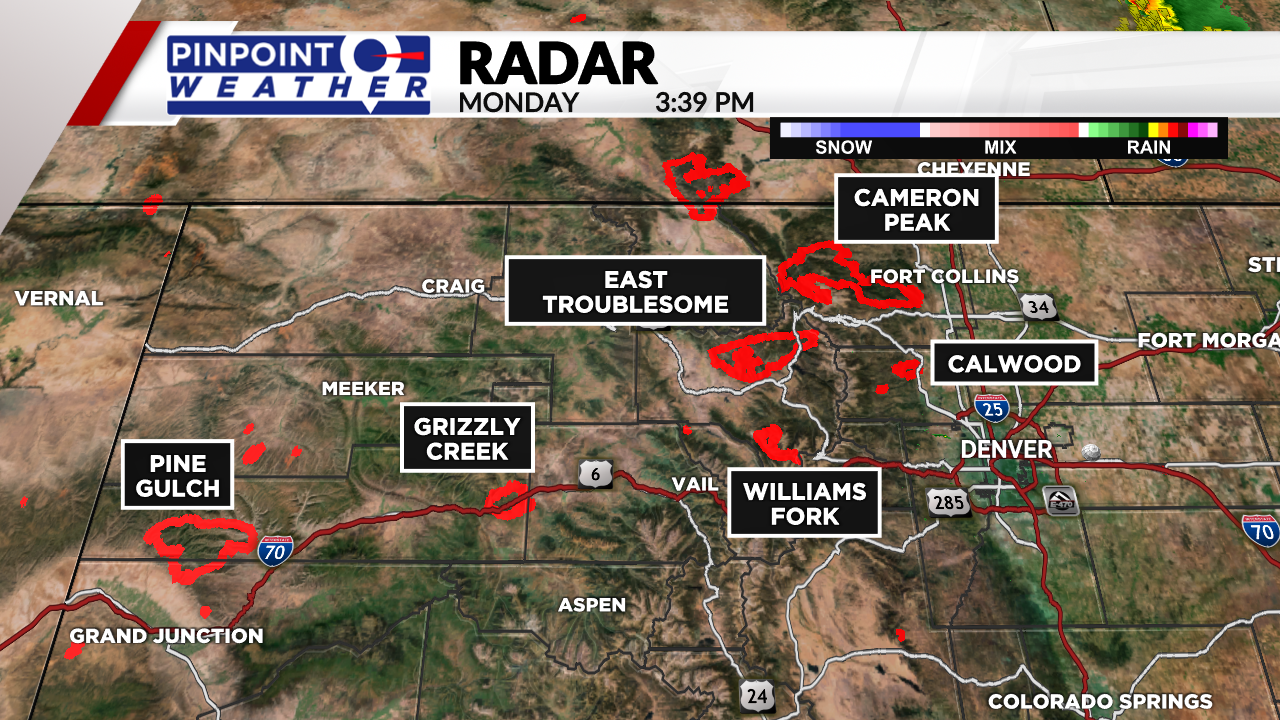DENVER (KDVR) — Burn scar flooding is a term you might hear local meteorologists use during heavy summer rain events and into monsoon season. It happens when too much rain falls on a burn scar where there was previously a wildfire causing flash flooding and sometimes mudslides and debris flow.
In Colorado, burn scar flooding has created big impacts in the last few years. In 2021, Glenwood Canyon along Interstate 70 had to close several times due to mudslides and debris flow on the highway from the Grizzly Creek burn scar.
After a wildfire happens, it is important to know that areas around the fire will be more prone to severe flooding for at least the next few years after the fire happens.
A good rule of thumb to know if you’re at risk is if you can see a burn scar above where you are, you are likely at risk for burn scar flooding. Here is a good resource from the National Weather Service if you live near a burn scar area.

The year 2020 brought the three largest wildfires on record for the state of Colorado. Above is a map that shows some of the main burn scar areas that meteorologists keep an eye on during rain season although there are several smaller fires that aren’t listed.
All of the burn scars above are from wildfires that happened in 2020. Even though it is now two years later, these areas are still at risk for flooding.
Burn scar flooding happens because the vegetation that normally helps absorb rainwater no longer blocks water absorption after it is burned. When it rains too much in a short amount of time, the water then rushes downhills of the burn scar and can cause flash flooding, mudslides, and debris flow.

Keep in mind that it only takes about a half of an inch of rain in less than an hour to cause burn scar flash flooding.
Over the next seven days, Colorado will see monsoonal moisture increase from the south bringing several inches of rain to parts of the state.

Southern Colorado could see up to 2.5 inches of rain by next week with up to an inch possible in metro Denver and the central and northern mountains.
The Pinpoint Weather Team will keep you updated on the risks of burn scar flash flooding in the coming days and weeks on-air and online.


